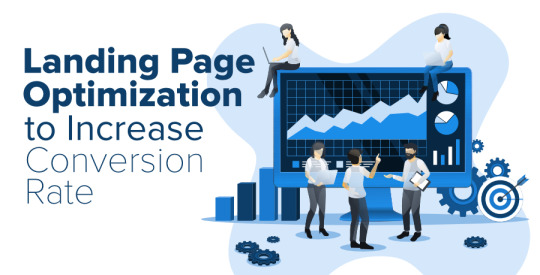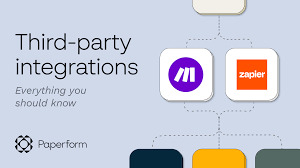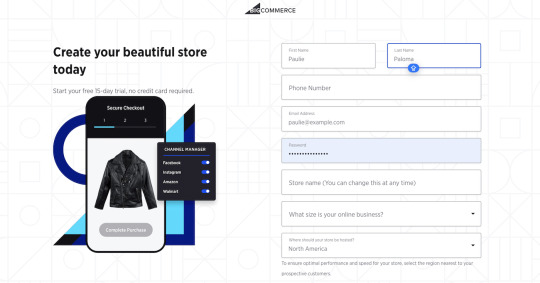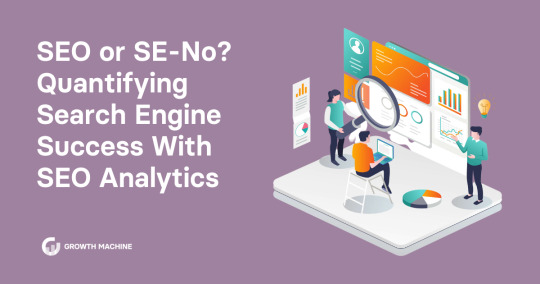Don't wanna be here? Send us removal request.
Text
Best Lead Generation Tools for B2B & B2C Businesses: A Complete Guide
Generating quality leads is crucial for both B2B and B2C businesses. With the right tools, you can streamline the process, attract high-intent prospects, and drive conversions effectively. In this guide, we’ll explore the best lead generation tools that can help grow your business.
What Are Lead Generation Tools?
Lead generation tools help businesses identify, capture, and nurture potential customers. These tools include email finders, CRM software, chatbots, landing page builders, and automation platforms that optimize customer acquisition.
Best Lead Generation Tools for B2B
B2B businesses require tools that focus on high-value prospects and relationship-building.
1. HubSpot – All-in-one CRM with lead capture forms, automation, and analytics.
2. LinkedIn Sales Navigator – Ideal for finding and connecting with decision-makers.
3. Apollo.io – Powerful tool for email outreach and contact enrichment.
4. Clearbit – Data intelligence tool to enrich leads with valuable insights.
5. Drift – AI-powered chatbot for real-time engagement and lead qualification.
Best Lead Generation Tools for B2C
B2C businesses focus on volume, personalization, and engagement-driven lead capture.
1. OptinMonster – Pop-up and exit-intent forms to convert website visitors.
2. ActiveCampaign – Email marketing automation to nurture potential leads.
3. ManyChat – AI chatbots for Facebook Messenger and Instagram.
4. Unbounce – Landing page builder to drive sign-ups and conversions.
5. Google Ads Lead Form Extensions – Captures leads directly from search ads.
Choosing the Right Tool for Your Business
When selecting a lead generation tool, consider your budget, target audience, integration needs, and automation capabilities. B2B businesses benefit from CRM and outreach automation, while B2C businesses thrive with landing pages, chatbots, and ads.
Final Thoughts
Investing in the right lead generation tools can increase your conversion rates, save time, and scale your business efficiently. Whether you're targeting B2B or B2C leads, leveraging AI-driven and automation tools can give you a competitive edge.
0 notes
Text
GoHighLevel vs Competitors: Is It the Best CRM for Your Business?
Choosing the right CRM can make or break your business. With so many options available, how does GoHighLevel compare to its competitors like HubSpot, ClickFunnels, ActiveCampaign, and Keap? In this article, we’ll break down the key features, pricing, and pros and cons to help you decide if GoHighLevel is the best fit for your business.
What Makes GoHighLevel Stand Out?
GoHighLevel is an all-in-one marketing and sales automation platform built primarily for agencies, coaches, and service-based businesses. Unlike traditional CRMs that focus solely on customer data, GoHighLevel combines: ✅ CRM & Sales Pipeline – Track leads and automate follow-ups. ✅ Funnels & Websites – Build sales funnels without third-party tools. ✅ Email & SMS Marketing – Automate campaigns with built-in tools. ✅ Booking & Appointment Scheduling – Streamline client meetings. ✅ Reputation Management – Manage and respond to reviews easily. ✅ White Labeling – Rebrand the platform as your own for reselling.
GoHighLevel vs. Popular Competitors
Here’s how GoHighLevel stacks up against other CRM solutions:FeatureGoHighLevelHubSpotClickFunnelsActiveCampaignKeapCRM & Pipelines✅ Yes✅ Yes❌ No✅ Yes✅ YesFunnel Builder✅ Yes❌ No✅ Yes❌ No❌ NoEmail & SMS✅ Yes✅ Yes❌ No✅ Yes✅ YesAutomation✅ Advanced✅ Limited✅ Yes✅ Yes✅ YesWhite Labeling✅ Yes❌ No❌ No❌ No❌ NoPricing💲💲 Affordable💲💲💲 Expensive💲💲 High💲 Affordable💲💲 Mid-Range
Pros & Cons of GoHighLevel
✅ Pros: ✔️ Replaces multiple tools (CRM, email, SMS, funnels, automation) ✔️ Affordable for agencies with unlimited client accounts ✔️ White-label option for branding and reselling
❌ Cons: ❌ Learning curve for beginners ❌ No free plan (only a 14-day trial) ❌ Not ideal for eCommerce businesses
Is GoHighLevel Right for You?
If you’re a marketing agency, coach, or service-based business looking for an all-in-one automation platform, GoHighLevel is a powerful and cost-effective solution. However, if you only need a simple CRM without advanced automation, tools like HubSpot or ActiveCampaign might be better.
👉 Final Verdict: GoHighLevel is an excellent CRM for agencies and marketers who want to streamline their workflow, automate sales, and scale their business efficiently.
0 notes
Text
10 Proven Strategies to Maximize ROI with ClickFunnels
ClickFunnels is a powerful platform for creating sales funnels, but its true potential lies in how effectively you use it. Whether you're new to ClickFunnels or looking to improve your results, here are ten proven strategies to maximize your ROI:
1. Define Your Target Audience
Before building a funnel, understand who you’re targeting. Create detailed buyer personas to ensure your funnel messaging and offers resonate with the right audience.
2. Leverage Pre-Built Funnel Templates
ClickFunnels offers a variety of customizable templates. Choose one that aligns with your goals—whether it’s lead generation, sales, or webinar registrations—and save time while ensuring a professional look.
3. Craft a Compelling Value Proposition
Your funnel's success depends on your ability to communicate value. Use clear, benefit-driven headlines and concise copy to capture attention and encourage conversions.
4. Optimize Landing Pages for Conversions

Keep landing pages simple and distraction-free. Use A/B testing to refine headlines, CTA buttons, and layouts, ensuring every element is optimized for conversion.
5. Incorporate Upsells and Downsells
Boost your revenue by adding one-click upsell and downsell offers. These additional options allow customers to make complementary purchases seamlessly.
6. Automate Email Follow-Ups
Use ClickFunnels’ email marketing tools to nurture leads and guide them through the sales process. Personalized, timely follow-ups can significantly increase conversion rates.
7. Track Key Metrics
Monitor essential funnel metrics, such as click-through rates (CTR), conversion rates, and average cart value (ACV). Use these insights to identify areas for improvement.
8. Integrate with Third-Party Tools

ClickFunnels supports integrations with CRM tools, payment gateways, and analytics platforms. Leverage these integrations to enhance functionality and streamline your operations.
9. Utilize Scarcity and Urgency Tactics
Create a sense of urgency with countdown timers, limited-time offers, or low-stock notices. These psychological triggers can drive faster decision-making and higher conversions.
10. Test, Optimize, and Scale
The best funnels are never “done.” Continuously test variations of your funnel elements, learn from the results, and scale what works best to maximize ROI over time.
Final Thoughts
By implementing these strategies, you can harness the full power of ClickFunnels to create high-converting sales funnels and drive substantial returns on your investment. Start small, experiment, and refine your approach for long-term success!
0 notes
Text
A Step-by-Step Guide to Setting Up Your BigCommerce Store Like a Pro
Launching an online store is an exciting endeavor, but choosing the right platform and setting it up effectively can make all the difference. BigCommerce is one of the most powerful e-commerce platforms available, offering flexibility, scalability, and a range of tools to help businesses thrive online. Follow this step-by-step guide to set up your BigCommerce store like a pro.
Step 1: Sign Up for BigCommerce

Start by visiting the BigCommerce website and signing up for a free trial or selecting a plan that fits your business needs. During the signup process, you'll provide basic information about your store, such as your business name and industry.
Pro Tip:
Choose a plan that aligns with your goals. For example, if you anticipate rapid growth, opt for a plan that supports scalability and advanced features.
Step 2: Customize Your Store’s Theme
BigCommerce offers a variety of professionally designed themes to suit different industries. To select and customize a theme:
Go to the "Storefront" section in your BigCommerce dashboard.
Browse free and premium themes.
Choose a theme that matches your brand identity.
Use the "Theme Editor" to adjust colors, fonts, and layouts to reflect your branding.
Pro Tip:
Ensure your chosen theme is responsive, providing a seamless shopping experience on both desktop and mobile devices.
Step 3: Add Products

Your products are the heart of your store. To add them:
Navigate to the "Products" section.
Click "Add Product."
Enter product details, including name, description, price, and SKU.
Upload high-quality images and videos to showcase your products.
Organize your products into categories to improve navigation.
Pro Tip:
Write detailed and engaging product descriptions that highlight features and benefits. Use relevant keywords to improve SEO.
Step 4: Configure Payment and Shipping Settings
BigCommerce supports multiple payment gateways, including PayPal, Stripe, and Square. To set up payments:
Go to the "Settings" tab and select "Payments."
Choose your preferred payment methods and follow the setup instructions.
For shipping:
Navigate to "Settings" > "Shipping."
Configure shipping zones, methods, and rates based on your target audience.
Pro Tip:
Offer free shipping or flat-rate shipping options to attract more customers.
Step 5: Set Up SEO and Analytics

Optimizing your store for search engines is crucial for driving traffic. BigCommerce provides built-in SEO tools:
Go to the "Storefront" section and edit your site’s metadata (title tags, meta descriptions, and URLs).
Add alt text to images to improve accessibility and SEO.
Enable Google Analytics and Facebook Pixel to track user behavior and refine your marketing strategies.
Pro Tip:
Create an XML sitemap and submit it to Google Search Console for faster indexing.
Step 6: Test Your Store
Before going live, test your store thoroughly:
Place test orders to ensure the checkout process works seamlessly.
Check the responsiveness of your site on different devices.
Verify that all links, buttons, and forms are functioning correctly.
Pro Tip:
Ask friends or colleagues to review your store for a fresh perspective on usability and design.
Step 7: Launch Your Store
Once you’re satisfied with your setup, it’s time to launch! Switch your store from "Maintenance Mode" to live status in the BigCommerce dashboard. Promote your store through social media, email campaigns, and paid ads to drive traffic.
Pro Tip:
Run a launch promotion or giveaway to attract your first customers and build momentum.
1 note
·
View note